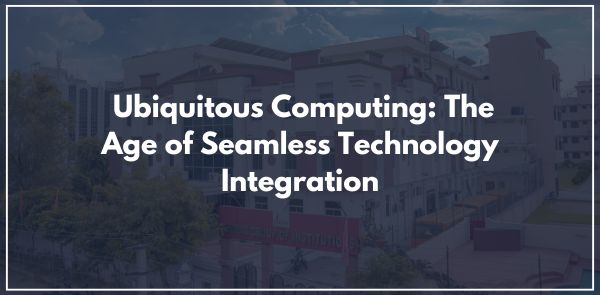
Ubiquitous computing, also referred to as "ubicomp," is a concept that describes the integration of technology into the environment in such a way that it becomes an invisible, pervasive part of our daily lives. The term was first coined by computer scientist Mark Weiser in 1988, and since then, it has evolved into one of the key visions of modern computing. Unlike traditional computing paradigms where users interact with distinct devices like desktop computers, smartphones, or laptops, ubiquitous computing envisions a world where computing devices are seamlessly integrated into the fabric of the environment, becoming almost invisible yet constantly accessible.
At the core of ubiquitous computing is the idea of making technology invisible to users. The goal is not to have users consciously interact with specific devices but rather for the technology to be integrated into everyday objects, spaces, and activities, enhancing functionality without drawing attention. This pervasive nature of computing changes the way we think about technology — it is no longer limited to physical screens and keyboards but can be embedded in objects ranging from household appliances to public infrastructure.
For instance, a home may be equipped with smart appliances such as refrigerators that notify users when food is running low, washing machines that adjust their cycles based on the laundry load, or lighting systems that automatically adjust to the time of day. In a broader context, public spaces such as malls, airports, and offices may have smart systems that track individuals’ movements, adjusting environmental settings or providing tailored services based on real-time data.
Several technological advances have converged to make ubiquitous computing a reality. These include:
The potential applications of ubiquitous computing are vast and varied, touching nearly every aspect of life. Some key areas include:
While ubiquitous computing holds immense promise, its widespread adoption also brings several challenges. One major concern is privacy. The extensive collection of data by ubiquitous systems raises questions about how this data is used, who owns it, and how it is protected. Users may feel uneasy about their every move being tracked by sensors or their personal preferences being monitored by AI systems.
Security is another significant challenge. As more devices become interconnected, the potential for cyberattacks increases. If a hacker gains control over a smart home system or a medical device, the consequences could be disastrous. Ensuring that these systems are secure and that data is encrypted is essential for building trust in ubiquitous computing.
Additionally, there are concerns about the digital divide. As ubiquitous computing becomes more pervasive, there is a risk that those without access to these technologies could be left behind, further exacerbating social inequality.
One of the best colleges in Jaipur, Poddar International College, is all embracing Ubiquitous Computing to ensure seamless technology integration. With focus upon holistic development, experiential learning, and practical exposure, the students are trained with ready-to-work skills. They enjoy the added advantage of excellent placements provided by the college, preparing them for the dynamic digital world ahead.
The future of ubiquitous computing is bright, with ongoing advancements in AI, connectivity, and the Internet of Things. As these technologies evolve, we can expect even more seamless and intuitive interactions with our surroundings. The dream of a truly interconnected world where technology enhances every aspect of our lives without being intrusive is within reach. However, achieving this vision will require overcoming challenges related to privacy, security, and equity, ensuring that these advancements benefit everyone, not just a select few.
In conclusion, ubiquitous computing represents a paradigm shift in how we interact with technology. By embedding intelligent systems into everyday objects and environments, it promises to make our lives more efficient, connected, and personalized. As we continue to integrate computing into the fabric of our daily existence, the line between the digital and physical worlds will continue to blur, creating new opportunities and challenges for individuals, businesses, and society at large.